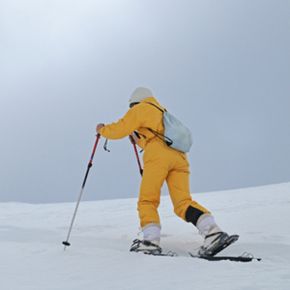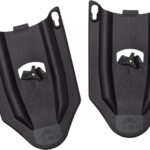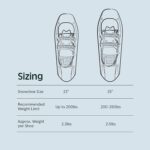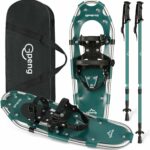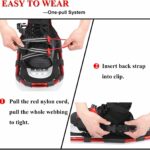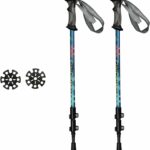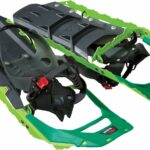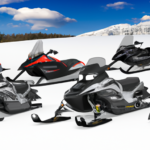Snowshoes are more than just a novel winter accessory, they possess an interesting science that tends to be overlooked while enjoying a trek in the snow. This article is about understanding the physics behind how snowshoes work. It’s not magic or clever design alone, but a practical application of pressure distribution principles. Think of it this way: if you’ve ever struggled to trudge through deep snow and then witnessed someone gliding over the frosty terrain with ease, then you’ve seen snowshoes in action. This write-up will uncover the intriguing secret behind why snowshoes prevent you from sinking into the snow.

Understanding Snowshoes
Definition and purpose of snowshoes
Snowshoes are special footwear designed to help you walk over snow without sinking too deeply. They work by distributing your weight across a larger surface area, reducing the amount of pressure on the snow surface. This allows you to move more freely and stay on top of the snow, rather than being hindered by it.
A brief history of snowshoes
Snowshoes have been around for thousands of years and have been used by different cultures across the globe. Originally, they were constructed from wood and leather, with the intent to aid in survival during harsh winter conditions. They have evolved extensively over the centuries, with modern variants featuring lightweight materials and more streamlined designs.
Different types of snowshoes
There are several types of snowshoes available today which cater to various needs. There are traditional snowshoes that are large and oval-shaped, allowing for optimal snow floatation. There are also modern snowshoes that are smaller and feature sharper edges, which are great for climbing or traversing slopes. Some types even include special bindings and heel lifts for enhanced functionality and comfort.
The Physics Behind Snowshoes
The concept of pressure
Pressure is a fundamental concept in physics. Defined as the force per unit area, pressure is directly proportional to the force and inversely proportional to the area. This dynamic is key to understanding how snowshoes work.
Importance of the area in pressure calculation
The area is crucial in calculating pressure because the larger the area, the less pressure is exerted on a surface. This is why a knife, for example, can cut through a tomato. Despite the force exerted, the small surface area of the blade creates high pressure that easily breaks through the tomato’s surface.
The relationship between pressure and surface area
The relationship between pressure and surface area is a fundamental principle that snowshoes capitalize on. By increasing the surface area that a person’s weight is spread over, the snowshoes significantly reduce the pressure exerted on the snow. This makes the snow able to support the person’s weight without caving in.
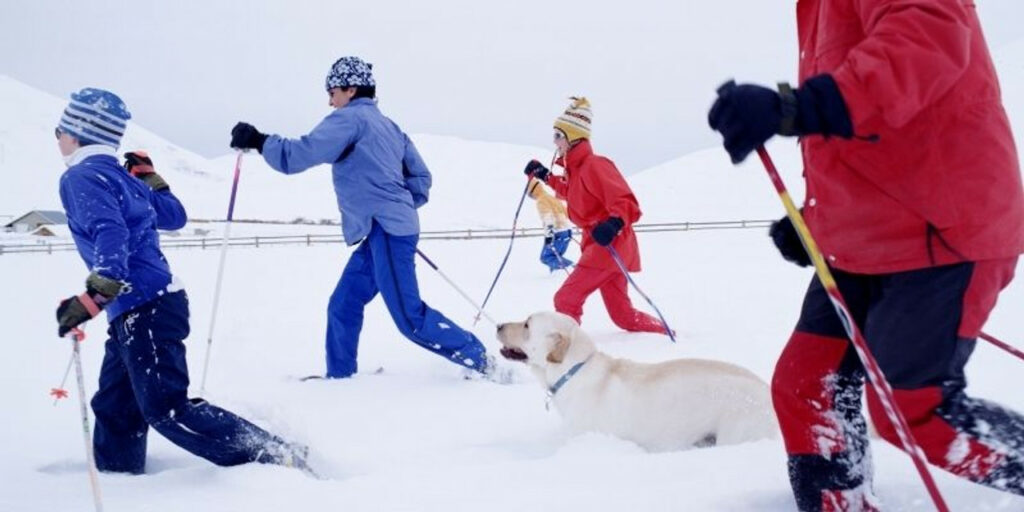
Application of Physics in Snowshoes
How increasing surface area decreases pressure
By providing a larger surface area, snowshoes distribute the wearer’s weight over a wider area. This effectively reduces the pressure exerted on the snow, making it less likely for a person to sink into the snow.
Use of lightweight materials in snowshoes
The use of lightweight materials in snowshoes serves to further minimize pressure on the snow. By reducing the weight that needs to be distributed across the snowshoe’s surface area, less pressure is exerted, enhancing flotation.
Effect of the snowshoe’s shape on pressure distribution
The shape of a snowshoe is another key factor in pressure distribution. The wider and longer the snowshoe, the more effectively it can distribute weight and decrease pressure. However, the design must also take into account maneuverability and comfort, meaning that there’s a need to strike a balance between size and practicality.
The Role of Snow in Snowshoe Design
Physical properties of snow
The physical properties of snow, such as its density and water content, can affect the performance and efficiency of snowshoes. These properties can alter how the snow reacts to pressure and how much it can compact.
How snowshoes interact with different types of snow
Snowshoes can interact differently with different types of snow. For example, wet and heavy snow might require larger snowshoes for better flotation. On the other hand, light and fluffy snow might allow for smaller, more maneuverable snowshoes.
Impact of snow depth and density on snowshoe performance
Snow depth and density also play a role in snowshoe performance. Deep and dense snow may require larger snowshoes to provide better floatation. On the other hand, shallow or less dense snow may allow for use of smaller snowshoes without compromising on mobility.

The Human Factor in Using Snowshoes
The effect of the wearer’s weight
The weight of the wearer can have a significant impact on snowshoe performance. More weight means more pressure on the snow, so heavier users may need bigger snowshoes to distribute the pressure effectively.
Influence of the wearer’s stride and pace
Your stride and pace, when wearing snowshoes, can influence the effectiveness of your movement. Smoother and longer strides can help maintain a steady pace and overcome obstacles in the snow more easily.
Adapting to different terrains and snow conditions
Adapting to different terrains and snow conditions is also a crucial aspect of using snowshoes. Steeper terrains might require a different technique or type of snowshoe compared to flat terrains. Understanding the different types of snow conditions and how to navigate them can improve your snowshoeing experience.
Practical considerations in Snowshoe Design
Material and construction of snowshoes
The material and construction of snowshoes can significantly affect their weight and durability. Modern snowshoes often use lightweight, durable materials like aluminum, plastic, and synthetic fabric. In addition, tough materials are often used for the bindings and crampons to ensure a secure grip on the snow.
Balancing weight and strength in snowshoe design
Balancing weight and strength is a key consideration in snowshoe design. Lightweight materials must be paired with robust construction to ensure the snowshoes can withstand the pressure of a person’s weight, while also protecting against wear and tear from the snowy terrain.
Influence of other gear on snowshoe usage
Other winter gear can also influence snowshoe usage. For example, thick winter boots might require larger binding to fit comfortably. Also, using poles for balance and support can change the way you move and place your feet.
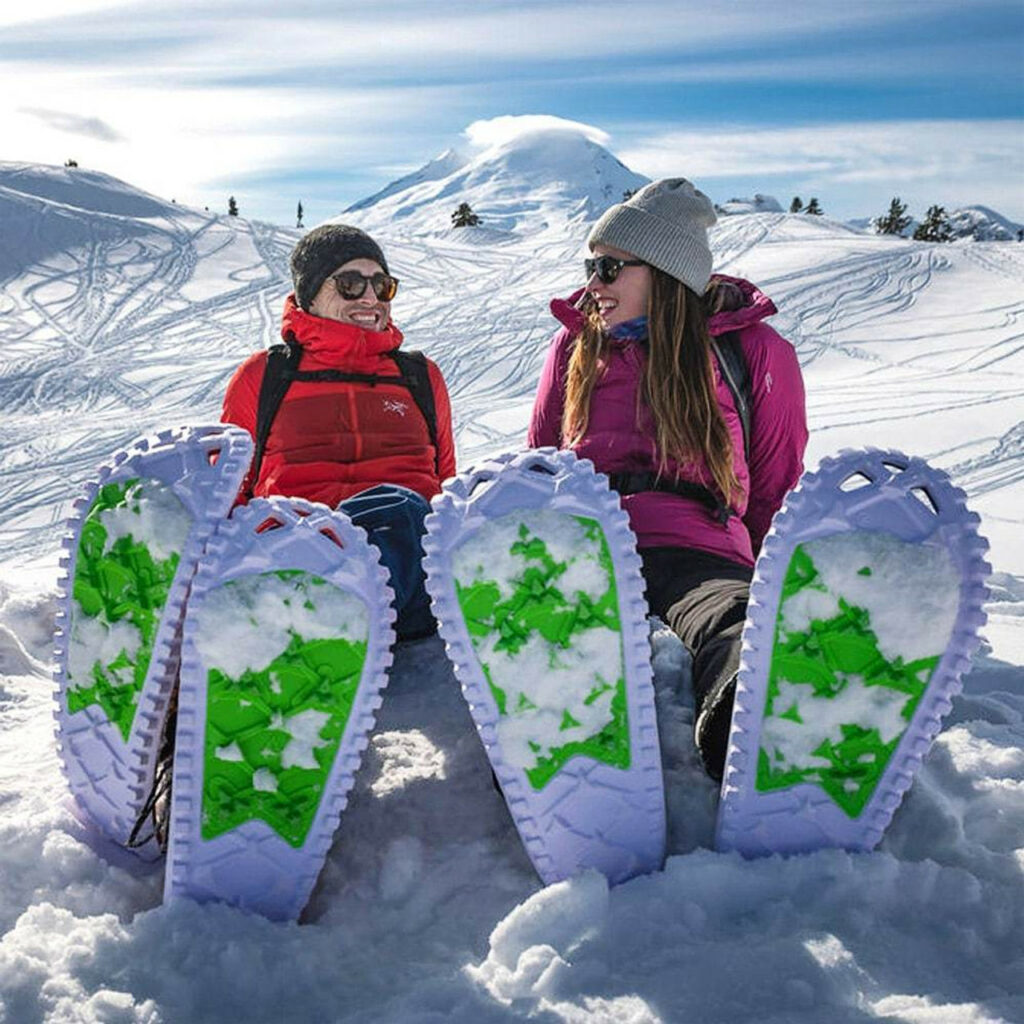
Benefits of Snowshoes
Ease of movement in snowy terrain
One of the primary benefits of snowshoes is the ease of movement they provide in snowy terrain. They enable you to walk over snow easily and efficiently, without expending excessive energy.
Safety benefits of using snowshoes
Using snowshoes can also improve safety by reducing the likelihood of slips and falls. With snow covering the ground, it can be easy to misjudge the terrain underneath and fall. Snowshoes, however, offer more stable footing and better traction.
Snowshoes for recreational and professional use
Snowshoes aren’t just for survival or comfort—they can also be used recreationally, for snowy hikes, nature walks, or even snowshoe racing. Professionals like forest rangers and outdoor athletes also use them for their work in snowy conditions.
Challenges in Using Snowshoes
Potential difficulties in maneuvering
Despite their benefits, snowshoes can also pose challenges. Maneuvering in snowshoes can be tricky for beginners; they’re wider than normal footwear and therefore require adjustments in striding and pacing.
Limitations in climbing or descending slopes
Climbing or descending slopes can also be difficult with snowshoes. While some designs have features to aid in handling slopes, not all snow conditions are favorable for walking uphill or downhill in snowshoes.
Getting accustomed to the feel and balance of snowshoes
Getting used to the feel and balance of snowshoes can also take time. They can feel awkward or unsteady at first, and the need to lift more weight with each step can result in tired legs sooner than usual.
Innovations in Snowshoe Technology
Recent advances in snowshoe design
Snowshoe design has come a long way from the simple wood and leather constructions of old. Recent advancements include the use of lightweight, durable materials, better bindings and crampon systems, and designs tuned for specific activities or terrain.
Use of new materials and methods
In addition to lighter and stronger materials, innovative construction methods have also improved snowshoe performance. For instance, the molding of plastics has allowed for seamless, single-piece snowshoes that maximize strength and durability while minimizing weight.
Future prospects for snowshoe technology
Looking ahead, there is potential for further innovations in snowshoe technology. These could include smart snowshoes equipped with sensors to measure factors like snow density, or augmented reality systems to help navigate difficult terrains.
Choosing the Right Snowshoes
Factors to consider in choosing snowshoes
When choosing snowshoes, consider factors like size, weight, design, and the specific conditions you’ll be using them in. Your weight, including any gear you’ll carry, is important for selecting the right size of snowshoes. The design should match your activities—whether recreational hiking, backcountry exploring, or running.
Fitting and sizing your snowshoes
Fitting and sizing your snowshoes properly is vital. In general, larger snowshoes provide more flotation in deep snow. The size and type of your winter boots also matter as they need to fit within the bindings.
Care and maintenance of snowshoes
Proper care and maintenance of snowshoes can extend their lifespan. After use, it’s good practice to dry your snowshoes before storage to prevent rust or other damage. Periodically check the bindings for any wear or damage, and repair or replace parts as necessary.
- What Snowboard Bindings Should I Get? - January 23, 2024
- What Size Screws For Snowboard Bindings? - January 23, 2024
- How To Snowmobile On Water? - January 23, 2024

